Lilies bear scented, trumpet-shaped flowers in summer. Lilies are perennials that have slim green leaves and tall stems. Bulbs should be planted in spring. Stems are unbranched and usually erect; they should be staked. Leaves are lance-shaped glossy, mid- to dark green leaves. There are 100 species of lilies and many more cultivars.
Lilies are a large group of true bulbs widely distributed but most abundant in warm regions. Most are perennials that die down after flowering to a crown of fleshy underground stems.
Lily bulbs are composed of fleshy, overlapping scales. The erect stems bear both spear-shaped leaves and funnel or bell-shaped flowers with 6 petals; the outer three are sometimes smaller than and overlap to some extent the inner three.
Lilies are often referred to as “garden aristocrats”; they add dignified glory to garden settings. The same dignified beauty prevails when they are grown in pots as cut flowers.
Lilies are often divided into two main groups. The first is garden kinds, both white and colored; these are referred to as “hardy lilies”. The second comprises the tender white, so-called “Easter Lilies” some of which can grow outdoors.
There are hardy lilies appropriate for every part of the garden. Growers agree that the most essential factor in the successful cultivation of lilies is good drainage. An ideal soil is a porous loam with a gravelly subsoil.
The depth of panting varies with the species but normally it should be about 3 times the height of the bulb.
Whether lilies are grown in a bed by themselves or in the border in combination with perennials, they require a year-round mulch to keep the soil mellow and to conserve moisture.
Easter lilies are usually considered greenhouse plants. they can be planted out in spring and will bloom in the garden in summer. They are commonly raised in a greenhouse.
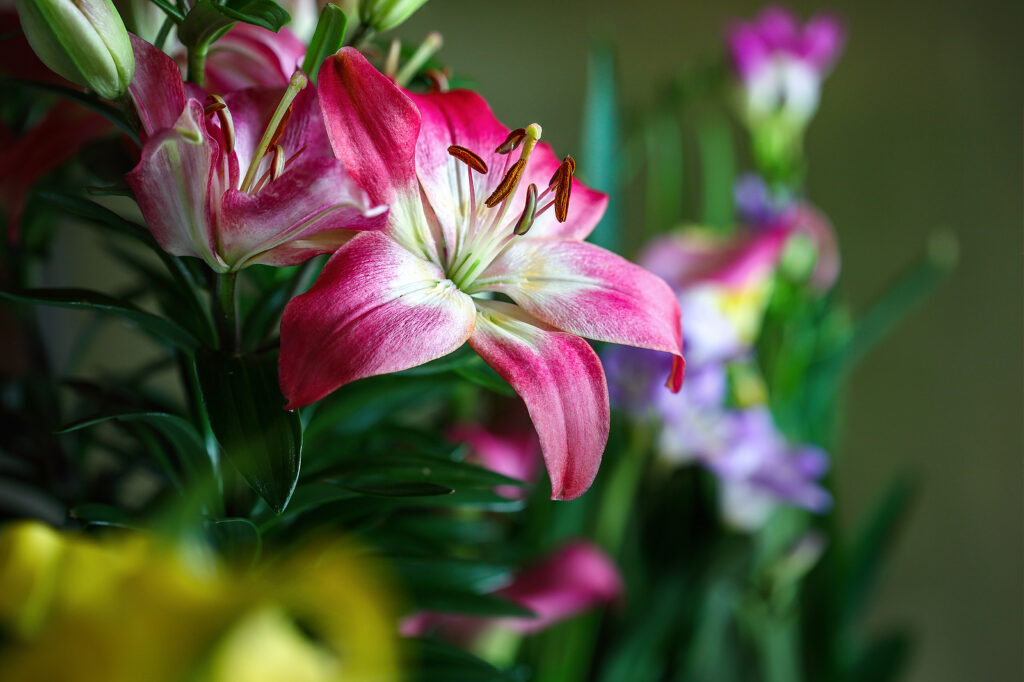
Get to know lilies
- Plant type: Hardy summer-blooming bulbs
- Growing Zones and range: Zones 3 to 10 depending on the species and cultivar
- Hardiness: Half-hardy; resistant to cold; some require winter cold; resistant to heat if the soil is kept cool.
- Height and width: 8 inches to 3 feet tall (20-91cm) and 4 to 18 inches (10-45cm) wide
- Foliage: Plants have erect stems, narrow and pointed leaves
- Flowers: Cup- to bowl- or bell-shaped, trumpet-shaped, or funnel-shaped blooms; flowers face upward, outward, or downward depending on species and cultivar; blooms range from 2 to 10 inches (5-25cm) across.
- Flower colors: Red, pink, orange, yellow, white, purple, or lavender with some spotted or striped or with contrasting throats.
- Bloom time: Spring through autumn
- Uses: Cut flower, fragrant
- Common name: Lily
- Botanical name: Lilium spp.
- Family: Liliaceae
- Origin: Europe and Asia
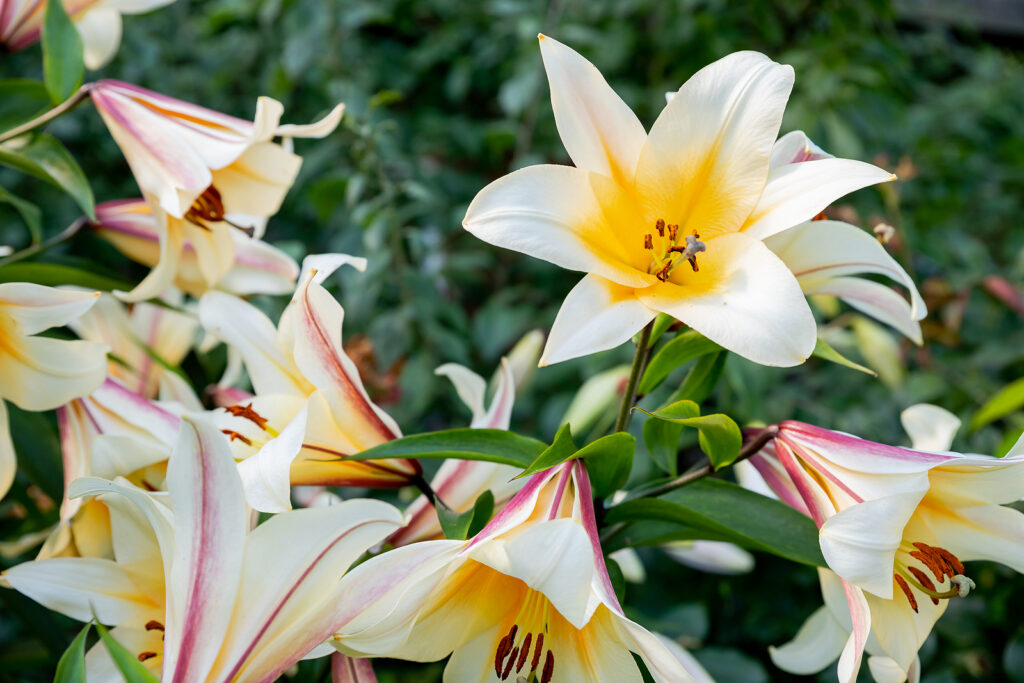
Where to plant lilies
- Grow lilies in full sun in Zones 3-5. Grow in full sun to light shade in Zones 6-9.
- Plant lilies in humus-rich, well-drained soil.
- Prepare the soil by adding aged compost and bonemeal and working the soil to 12 inches (30cm) deep.
- Lilies prefer a soil pH of 6 to 7.
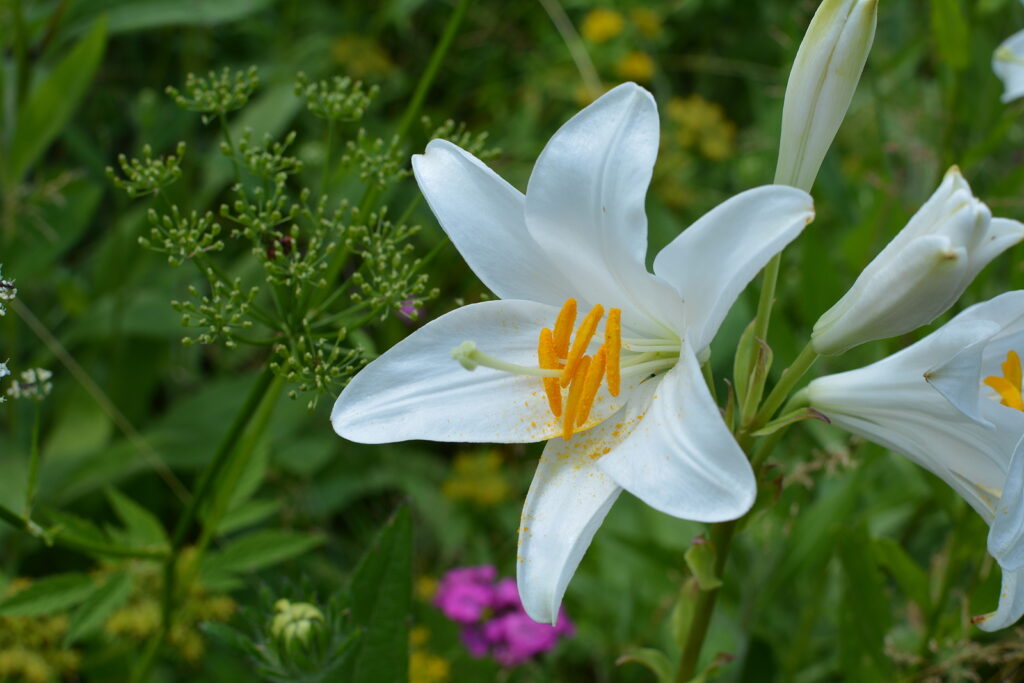
When to plant lilies
- Plant bulbs outdoors in early spring before the last frost or plant in autumn. Autumn planting will allow the bulbs to establish roots and bloom the following summer.
- Plant established container-grown lilies in the garden in spring.
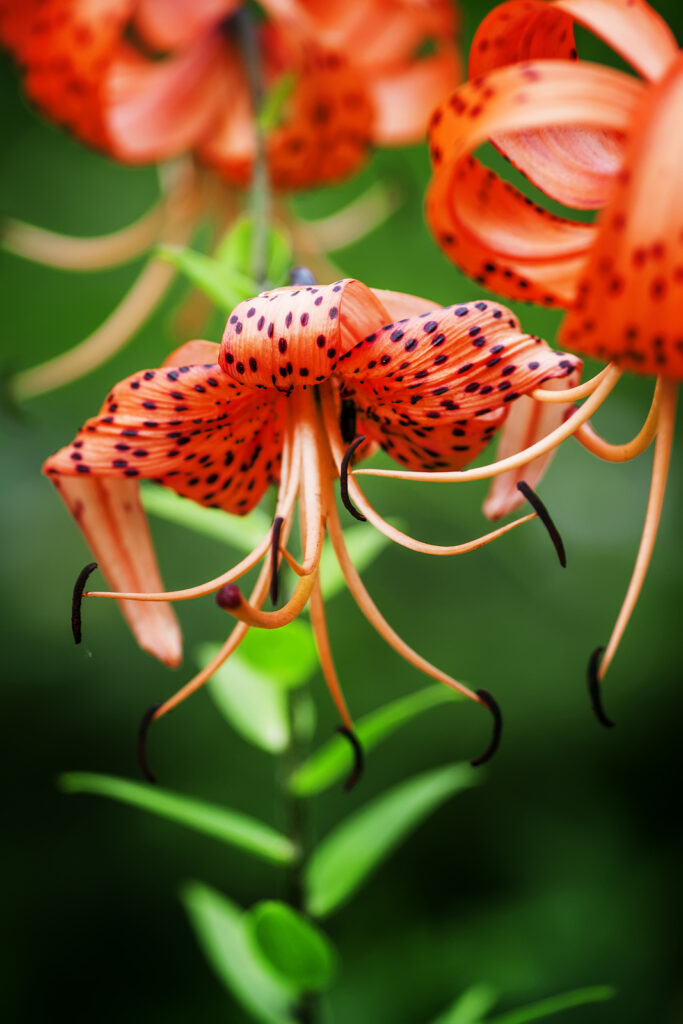
Planting and spacing lilies
- Space lilies 8 to 10 inches (20-25cm) apart.
- Plant bulbs 8 inches (20cm) deep except Madonna lilies which are planted 1 inch (2.5cm) deep and Turk’s-cap lilies which are planted 2 inches (5cm) deep.
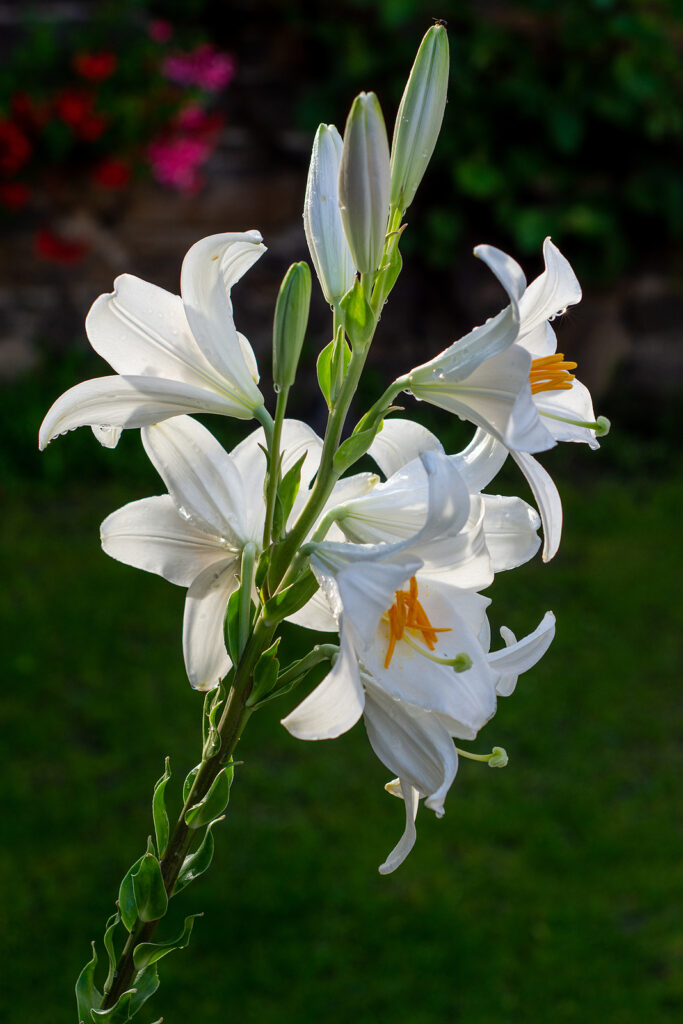
How to water and feed lilies
- Lilies need regular water during growth; keep the soil evenly moist.
- Work aged compost and bulb fertilizer or bonemeal into the soil at planting time.
- Fertilize lilies a second time when blooms fade.
- Mulch around plants to conserve soil moisture.
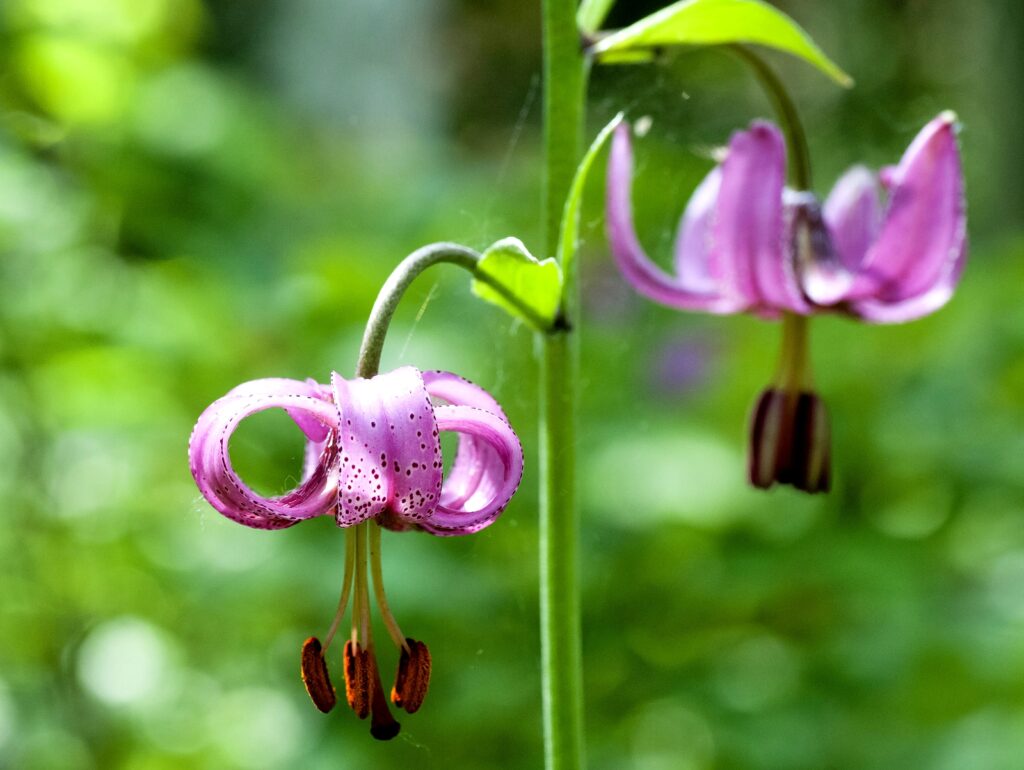
Care of lilies
- Stake lilies that grow more than a few feet tall. Place stakes far enough away from the base of the plant so that bulbs are not injured.
- Trim off spent flowers.
- Allow foliage to brown on the plant to help store energy for the next season; remove foliage that has browned.
- When leaves die completely in late summer, cut them off a few inches above the soil level to mark the spot.
- Protect lily bulbs in the ground from winter cold by placing evergreen boughs, straw, or chopped leaves over the bulbs.
- Remove the stamens from lilies used as cut flowers; this will keep pollen from dropping and staining furniture, carpets, and clothes.
Growing lilies as a houseplant
- Lilies can be purchased already in bud or bloom, or you can force your own bulbs into flower.
- To force your own bulbs, pot them in fall in a well-drained, soilless medium, with the tip of the bulb 2 inches below the top of the medium.
- Water well and place the pots outdoors, buried in the ground or protected in a cold frame for six weeks.
- If the temperature does not drop below 45°F during this time, place the bulbs in the refrigerator.
- Move the pots into a room with cool to average temperature, direct light, and average humidity.
- Keep the growing medium evenly moist and fertilize weekly with quarter-strength liquid fertilizer beginning when the shoots first appear and ending when the flowers open.
- Plants will bloom in about four months.
- After the plants have flowered they can be moved outdoors where they may bloom again the following year. They can not be reforced indoors again.
- The stamens of lilies can be cut off to prevent the pollen from falling on and staining furniture.
- Bulbs will produce small bullets that can be removed and used to grow new plants.
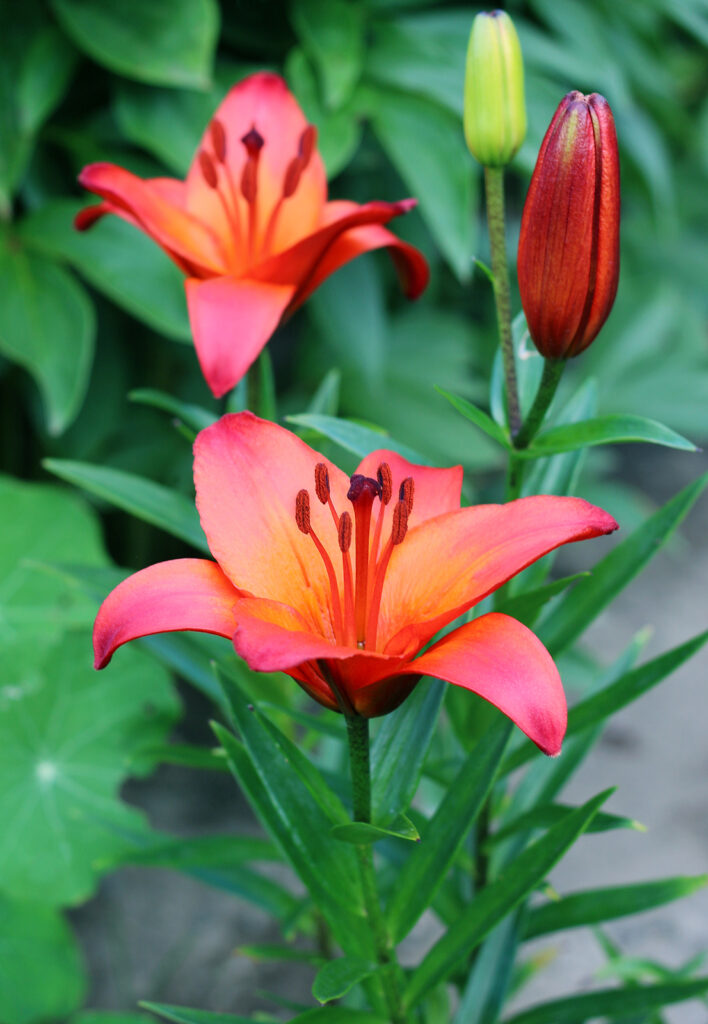
Lily pests and diseases
- Lilies can be attacked by aphids, mealybugs, and scale insects.
- Leaf spot, botrytis blight, and virus disease can occur.
Lily propagation
- Divide bulbs after they have bloomed and the foliage has turned brown.
- Divide lilies when they become too crowded or when flowers become smaller in size.
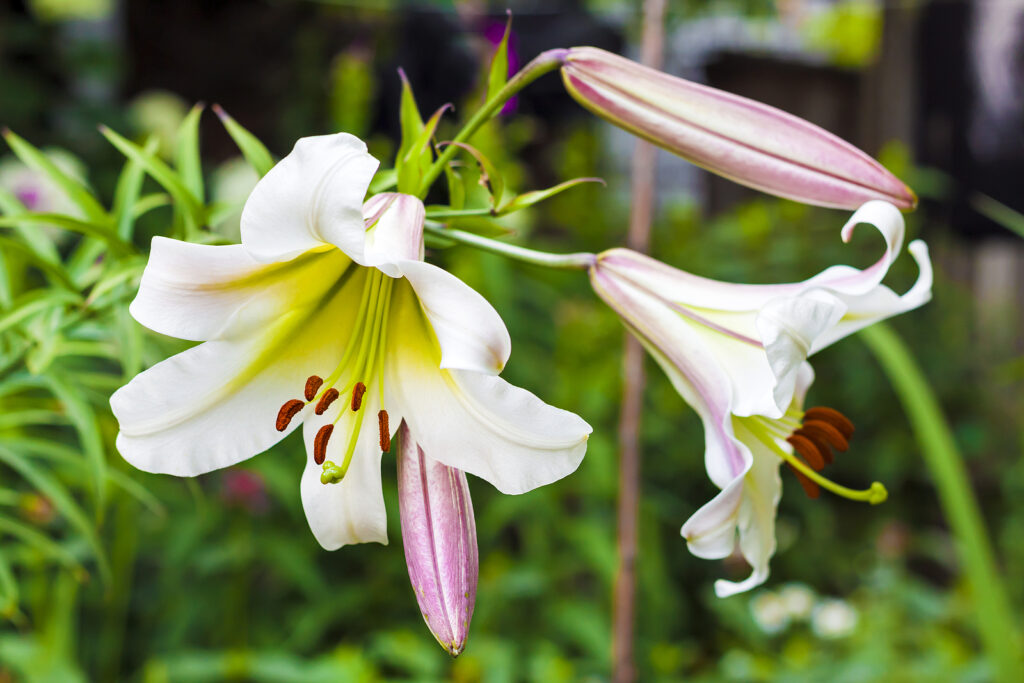
Lily varieties to grow
Lilies are divided into two groups, species and hybrids. Here are selected species:
- Lilium auratum (Gold-band lily). This species has fragrant, slightly drooping, bowl-shaped, 6- to 10-inch (15-25cm) flowers with crimson spots and gold stripes on each petal. Blooms in late summer. Grows 3 to 9 feet tall in Zones 5-10.
- L. lancifolium (Tiger lily). Drooping flowers with recurved petals about 5 inches (12.7cm) across; flowers are orange-spotted in purple. Blooms in late summer. Grows 4 to 6 feet tall in Zones 4-8.
- L. longiflorum (White trumpet lily, also known as the Easter lily). Fragrant, pure white, trumpet-shaped flower, 7 inches (17cm) across. Blooms in midsummer. Grows 2 to 3 feet tall.
- L. Martagon (Turk’s-cap lily). Drooping, reflexed, 2-inch flowers; blooms are white through pink and purple to almost black. Blooms in late spring. Grows 4 to 6 feet tall in ones 4-9.
- L. regale (Regal lily). Funnel-shaped, fragrant, 6-inch (15cm) flower, white on the insides with a yellow throat, and purplish-red on the outside. Blooms in midsummer. Grows 2 to 5 feet tall in Zones 4-9.
- L. speciosum. Fragrant, outward-facing pale pink or white flowers to 7 inches (18cm) across, flushed deeper pink in the centers. Blooms in late summer. Grows 3 to 5 feet (.9-1.6m) tall in Zones 5-7.
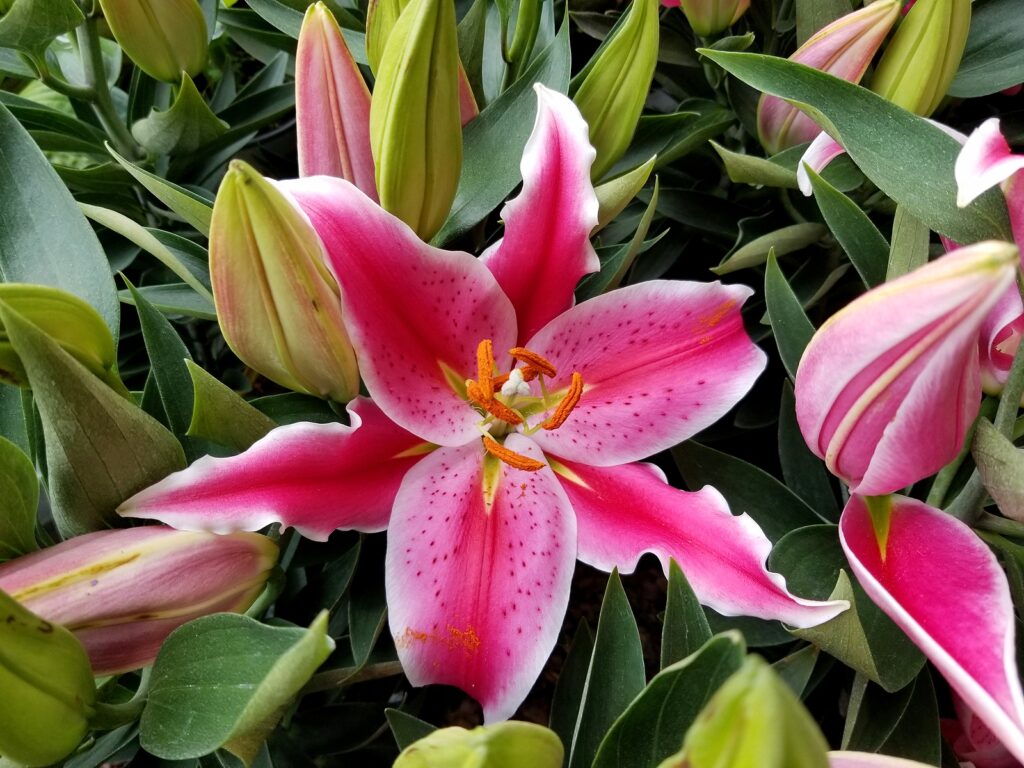
Well-known hybrid lilies include:
- Asiatic hybrids. Flowers are 4 to 6 inches (10-15cm) wide; colors include white, yellow, red, orange, pink, and lavender in solids and in combinations; some flowers are spotted. Bloom in midsummer; grows 2 to 5 feet (.6-1.5m) tall in Zones 4-7.
- Aurelian hybrids. Flowers to 8 inches (20cm) across are many colors, some with yellow throats or maroon stripes. Blooms midsummer; grows 3 to 6 feet (.9-1.8m) tall in Zones 5-10.
- Candidum hybrids (Madonna lilies). Pure white, fragrant, trumpet-shaped flowers grow to 4 feet (1.2m) tall. Blooms in early summer; foliage disappears after the flowers fade and reappear in fall. Grow in Zones 5-10.
- Oriental hybrids. Bowl-shaped or flat flowers are 3 to 10 inches (7.6-25cm) long with backswept petals; colors are white, yellow, pink, or crimson. grows 2.5 to 7 feet(.7-2.15m) tall. Blooms in late summer and early fall.















